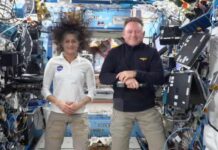NASA’s cutting-edge X-59 QueSST (Quiet Supersonic Technology) aircraft is poised to revolutionize the future of air travel. Designed to break the sound barrier without generating the infamous sonic boom, the X-59 represents a significant leap forward in supersonic aeronautics.
The Sonic Boom Challenge:
Traditional supersonic flights produce disruptive sonic booms as aircraft break through the sound barrier, limiting them to flying over oceans. The X-59, however, seeks to overcome this challenge with its innovative design and technology.
Supersonic without the Boom:
The X-59’s unique shaping and advanced aerodynamics aim to minimize the impact of sonic booms, making it possible to fly at supersonic speeds over populated areas without causing disturbances on the ground. This breakthrough could pave the way for high-speed travel across continents, transforming the aviation industry.
Quiet Supersonic Technology:
At the heart of the X-59’s design is its emphasis on quiet supersonic technology. By carefully shaping the aircraft and utilizing advanced engineering solutions, NASA aims to achieve a sonic profile that minimizes the noise generated during supersonic flight, making it more environmentally friendly and socially acceptable.
Unprecedented Cockpit Visibility:
In addition to its groundbreaking acoustic innovations, the X-59 features a panoramic cockpit with a single-seat configuration, enhancing the pilot’s field of view. This design not only prioritizes safety but also showcases NASA’s commitment to pushing the boundaries of aerospace engineering.
Collaborative Effort:
The development of the X-59 is a testament to international collaboration. NASA has partnered with various organizations, including Lockheed Martin, to bring this groundbreaking project to fruition. The collaboration leverages expertise from both the public and private sectors, ensuring a holistic approach to the challenges of supersonic flight.
Testing and Validation:
NASA’s Armstrong Flight Research Center is spearheading the testing phase of the X-59. The aircraft will undergo a rigorous series of flight tests to validate its performance and assess the effectiveness of its quiet supersonic technology. These tests will provide crucial data to refine the design and potentially influence future supersonic commercial aircraft.
Environmental Impact:
Beyond its technological advancements, the X-59 addresses environmental concerns associated with supersonic travel. NASA aims to establish the environmental impact of the aircraft, including its carbon footprint and emissions, as part of a comprehensive approach to sustainable aviation.
The Future of Supersonic Travel:
As the X-59 progresses through testing and validation, its success could mark a new era in supersonic air travel. By overcoming the challenges posed by sonic booms, NASA’s groundbreaking aircraft may pave the way for faster, more efficient, and environmentally conscious global transportation.












































